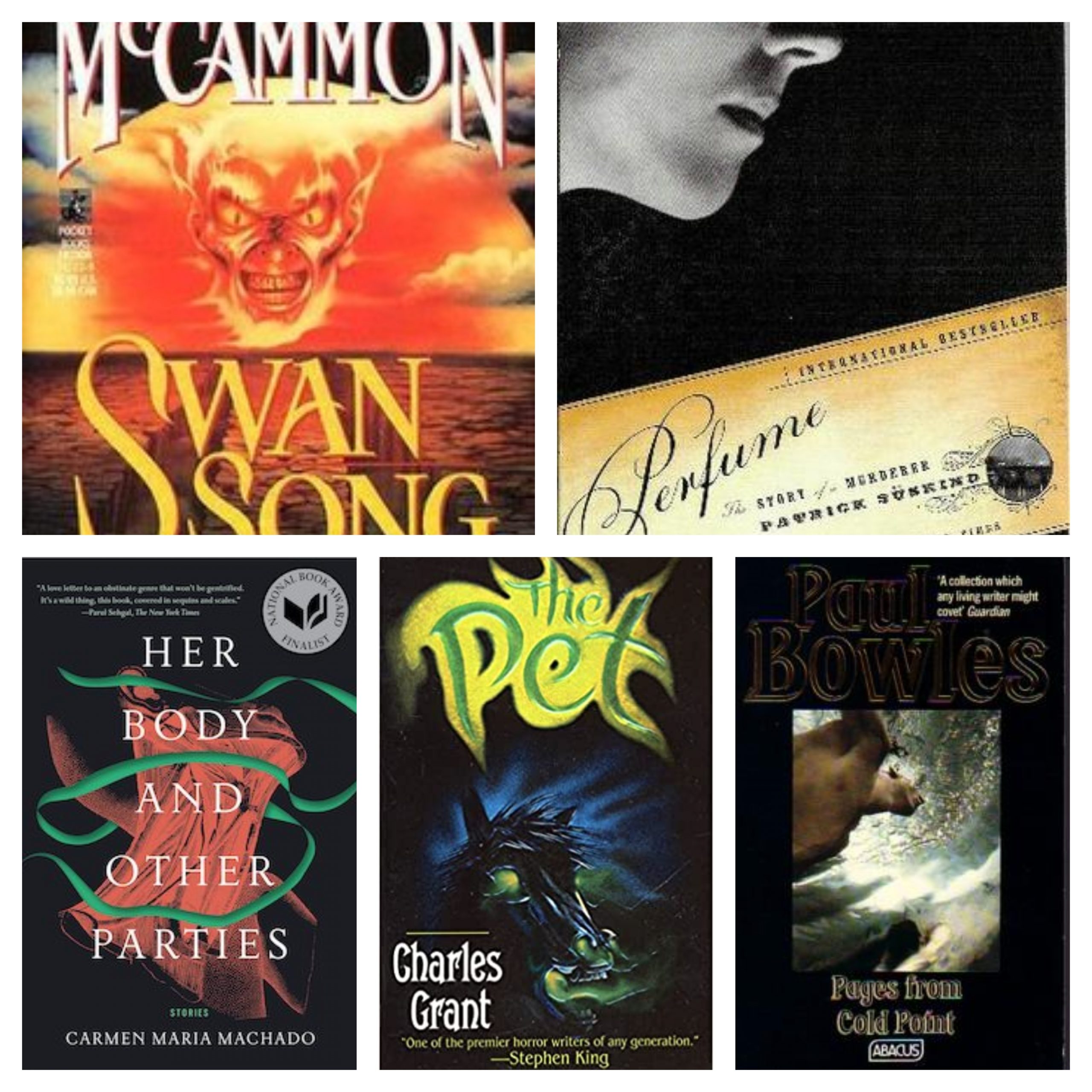As Grady Hendrix and Will Erickson have spoken/written of at length in Paperbacks from Hell and elsewhere, the ’80s were a boom period for horror fiction where writers like Stephen King and Dean Koontz were treated like superstars, regularly appearing on the New York Times bestseller list. But as Paperbacks from Hell pointed out, there were plenty of writers in the margins also churning out interesting, sometimes more creative, inventive fiction than the big boys. In this group, I’ll get into Robert McCammon and his similarities with Stephen King as well as the singular talent of Charles L. Grant on the art of the slow burn. This mega-list of horror I’m barging through willy nilly has quite a few other ’80s writers worth checking out as well like Michael McDowell, Joe Lansdale, Dennis Etchison, Karl Edward Wagner, T.E.D. Klein and lots of others.
Anyway, enough with the jibba jabba. On this slate, we have a slow burn green fire horse from the aforementioned Grant, a collection of unsettling stories from the wilds of North Africa, a tale of a murderous fellow with an unusual sense of smell, imaginative stories of gender politics and body dysmorphia and an apocalyptic vision of the end of the world.
Also for those just joining me, this is my journey through the following “Best of” Horror lists:
Reedsy Discovery Best Horror Books
Stephen Jones & Kim Newman’s Horror: 100 Best Books
Stephen Jones & Kim Newman Horror: Another 100 Books
If you want to check out my previous entries, they can be found here:
Part 12 | Part 11 | Part 10 | Part 9 | Part 8 | Part 7 | Part 6 |Part 5 | Part 4 | Part 3 | Part 2 | Part 1
Now if you’ll be so kind as to carefully acquire your warm glass of milk and sit for a spell while we traipse through the back alleys of horror fiction. Onward!
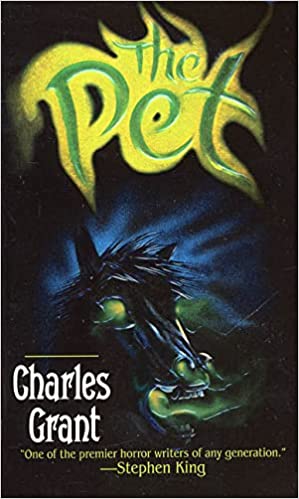
The Pet (Charles L. Grant, 1986)
List: Jones/Newman
Don can’t get a break. His parents are constant fighting with each other and quietly resents Don for living while his beloved younger brother Sam died. His dad is the principal of the school he attends and makes things harder for him on that front. His mother is having an affair with Don’s teacher. He has to deal with bully football players who are hellbent on getting him in trouble with the school faculty. And to top it all off, his best friend is trying to steal the girl he loves. Oh and there’s a madman out killing teens in town and maybe Don is next. His only respite from this hellstorm of anger and resentment is his animal posters and figurines, surrounding him in a quiet dignity. In particular, there’s a powerful black stallion poster he speaks to and pours all his frustration into. But when the horse starts to disappear from the poster and manifest in reality in a thick fog with green fire in its eyes and a desire to protect and kill for Don.
This was a big slow burn. It’s about halfway through the book before we really get to the meat of the plot. The first half is spent building Don’s character, showing what brings him to the place he eventually comes to mentally to make the decisions that leads to a path of death. Grant conveys Don’s increasing hate and mental instability with a nuance that really helps put the reader in Don’s mindset. Speaking of Don, he isn’t exactly what I’d call a likable character though. Full of angst and making irrational decisions, it can be hard to be on his side at times. The question is, do we need to be on his side? Well, the book really doesn’t give us hardly any other even remotely likable characters beyond his love interest Tracey and his friend Jeff. Although Jeff in particular isn’t really developed enough to care much about. In a way, Don actually reminds me quite a bit of Artie from Stephen King’s Christine, a put upon and initially pitiable and somewhat likable character that grows more and distant and deranged as things progress. The pacing is interesting here because it starts slow at first, more of a high school drama with the undercurrents of dread of the loose killer, but once Don’s “pet” manifests, the pacing accelerates to a near frenzy barreling toward its conclusion. It actually works pretty well to the point that I didn’t even notice some dangling plot threads until I thought back on it later. Overall, this was quite a good read that while flawed in some ways is still worth a read.
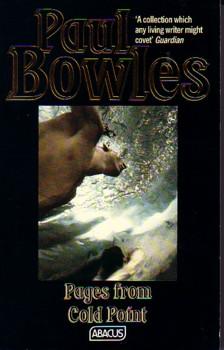
Pages from Cold Point (Paul Bowles, 1968)
List: Jones/Newman
Pages from Cold Point is a collection of stories from noted beat writer Paul Bowles and focuses on heavy topics like racism, drug abuse, incest and murder in North Africa. It’s relentlessly grim and while many of the stories aren’t strictly horror, none of them will leave you with the warm and fuzzies. The title story is an unsettling tale of a father who finds himself being captivated by his own strapping teenage son and apparently courted some controversy on its original release. “The Time of Friendship”, the longest tale in the book, on the surface seems like a more innocuous story than most in the collection about the friendship between an older Swedish lady and a young local boy. But in fact it’s a cold and despairing view of racism and religious intolerance with a grim and depressing ending. Several stories involve layabouts whiling away their days drinking and smoking kif (a kind of powerful hashish) in the dregs of society with “He of the Assembly” being the best of the bunch with a very strange, almost Kafka-esque vibe to it. The most overtly horror-themed story in the collection and the reason is was included in the Jones/Newman book is “The Delicate Prey”, a chilling and grotesque story that is very similar in structure to Bergman’s The Virgin Spring and Wes Craven’s Last House on the Left. Overall, this was a solid if flawed collection of stories. Bowles’ writing style is crisp and clean but at times does get buried in using local African terminology that I had trouble following in a few places (it could’ve used a glossary in an appendix). Also the stories are by and large so bleak that by the end it just left me with an emptiness inside.

Perfume: Story of a Murderer (Patrick Suskind, 1987)
List: Jones/Newman
A small, toad of a child is born in shit and misery on the streets of Paris. What he lacks in looks, grace and compassion, he makes up for and more with the keenest sense of smell that has ever existed. He can distinguish thousands of unique scents from miles away and remember each of them photographically. We follow him as he insinuates himself into the premiere perfumer in Paris, secretly supplying him with formulas for hundreds of new perfumes to catapult him to success. In exchange, the perfumer teaches him the process of distilling scenes which he had previously not known. One day he happens to come across a wonderful smell, one more lovely than any he has smelled before. When he follows the scent, he finds a beautiful young teen girl in the prime of life. He becomes so excited he kills her to revel in her scent further. When it dissipates, he vows to discover a process by which he can preserve such a scent which leads him down a dark path.
I was already a fan of the great Tom Twyker film adaptation of this strange, disturbing and darkly comic book and having finally gotten around to reading it, I am as enamored if not even more so with the novel. The way in which it’s told is almost like a grotesque fable with our lead spreading death and misery wherever he roams. His search for a personal identity is a fascinating one and the third act makes for a very satisfyingly twisted conclusion. I wholeheartedly recommend this grim-hearted but wry trip into a nasally driven phantasmagoria.
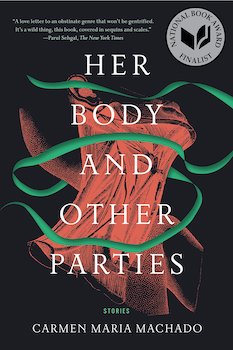
Her Body and Other Parties (Carmen Maria Machado, 2017)
Lists: NPR & Reedsy Discovery
This story collection is an interesting hodge podge of dark fantasy, queer themes, female body politics, bleak horror, anxieties of motherhood and womanhood and absurdism all mixed together in a heady stew. As one would expect, some stories are more effective and engaging than others. Highlights include the opening story “The Husband Stitch”, a riff on the old folk tale of the woman with a green ribbon around her neck that also acts as a rumination on folk tales themselves as filtered through the female gaze,”Eight Bites”, a story of body dysmorphia that adds a supernatural element and “Especially Heinous”, a hilarious and bizarre season-by-season episode guide of Law & Order SVU from an alternate universe where characters are possessed by ghosts with bells in their eyes and other madness. Some of the stories though feel too abstract and experimental to really get a handle on. Part of it is in the themes but part if it is also with the writing style with borders on a kind of muted poetry prose at times. In some ways, this collection reminds me of Angela Carter’s The Bloody Chamber with how it takes more traditional stories and mutates them with a more feminine focus. I will say though that I would put this above The Bloody Chamber just for its sheer unfettered creativity at play.
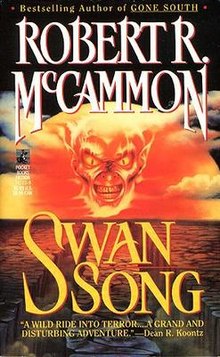
Swan Song (Robert R. McCammon, 1987)
Lists: NPR & Jones/Newman
This one hits a little close to home. Written in the ’80s during the US Cold War with Russia, McCammon’s mammoth book posits a not too distant future where full-scale nuclear war breaks out, leveling most major US cities and leaving the rest of civilization sick and dying, deformed and/or aimless and adrift in a lawless society. The book largely follows three disparate plotlines that eventually converge. One follows a crazy bag lady named Sister in Manhattan who discovers a glimmering crown of jewels in the rubble that seems to have magical properties tied to it. Another follows a big wrestler who fought under the name Black Frankenstein and the little girl named Swan with restorative powers who he has sworn to protect. The third is a military colonel and a sociopathic teen boy who found themselves trapped in an underground survivalist compound that failed to hold up to the nuclear attack as expected. And twisting and slithering through them all is the Man with the Scarlet Eye a.k.a. Friend a.k.a. a guy with a shifting melting face and the ability to conjure fire from his hands that may not be from this earthly realm and seems damned pleased to watch the world burn.
Many have noted the surface level similarities between Swan Song and Stephen King’s The Stand, but that’s all they are, surface level. Yes they are both about groups of people struggling to survive in the wake of a world ending disaster. Both have a seemingly demonic antagonist set on bringing death and destruction. There are also smaller similarities in places like both antagonists using wolves as a weapon at points. But really they’re quite different at their core. In general, Swan Song is a much bleaker story with more of an emphasis on the dehumanization of society. It also has a strong militaristic tone at times with multiple full-scale battles happening in the third act and a deeply cynical view of government and those in power. McCammon’s writing style is excellent skirting a fine line between muscular and lean pacing and beautifully poignant prose. While I actually liked Swan Song more than The Stand I think (although to be fair, it’s been about 17 years since I’ve read King’s apocalyptic opus), it isn’t a perfect book. It leaves some nagging dangling plot threads on the floor and feels like it spins its wheels a little before the time jump. Overall though, it’s very good and well worth checking out if you’re a fan of ’80s horror and/or post-nuke fiction.

